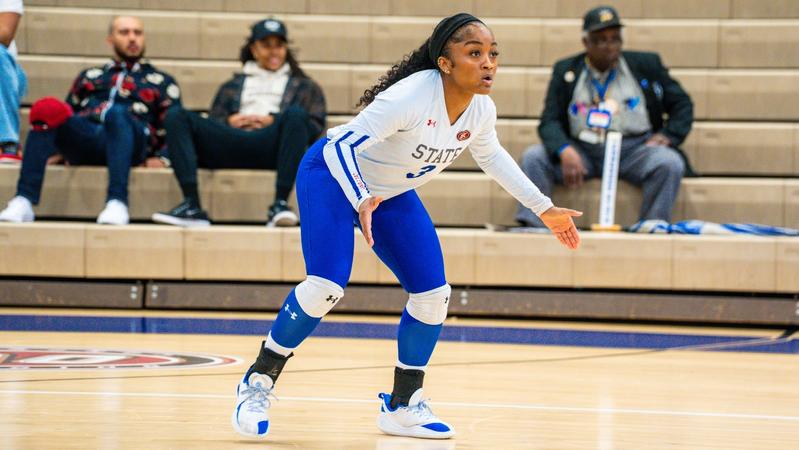NIL
Greg Sankey explains how College Football Playoff dictates 9-game schedule discussion
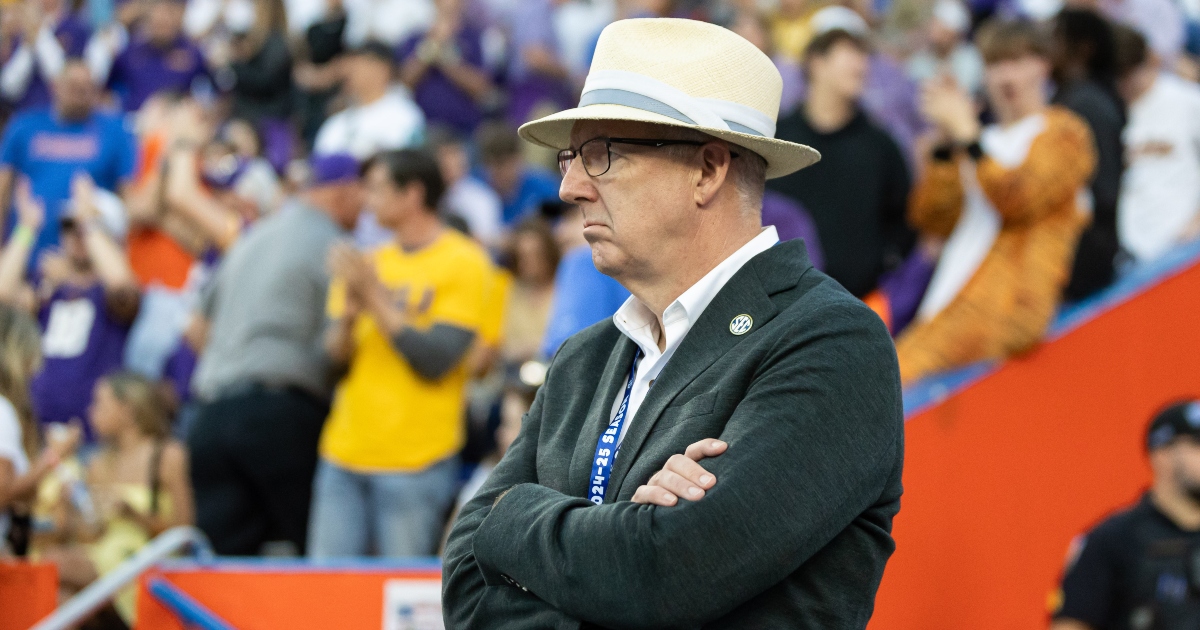
SEC Commissioner Greg Sankey made his annual appearance in the SEC Network booth during Sunday’s SEC Baseball Tournament championship game to discuss the litany of pressing topics currently facing the league. That included potentially expanding football’s conference scheduling model from eight to nine games, which will be among the most consequential issues on the docket during next week’s SEC Spring Meetings in Destin, Fla.
When asked what went into the SEC’s discussions around altering its conference football scheduling model, Sankey made it clear a lot of those conversations will revolve around how the league perceives the College Football Playoff committee’s current selection process.
“(It’s) a lot of numbers, a lot of opinions, a lot of conversations, a lot of looking back and looking forward, thinking about how really the College Football Playoff selection process currently governs schedule decision making,” Sankey told the SEC Network crew in the fifth inning Sunday. “I think the most recent example was Nebraska discontinuing a planned series with Tennessee in football and citing the CFP selection process, and it won’t hurt us if we don’t play that game. I understand why they did it, so it’s not about a particular university. That’s not healthy for college football in the big picture.”
As Sankey mentioned, Nebraska opted out of the previously scheduled 2026-27 home-and-home football series with Tennessee in February, a move that irked those in the SEC. Volunteers athletic director Danny While publicly expressed disappointment in the Cornhuskers’ decision to cancel the series, especially given the timing. The home-and-home series, which would’ve started in Lincoln in 2026 before moving to Knoxville in 2027, was originally agreed to more than a decade ago and was already rescheduled from 2016-17 before Nebraska called it off earlier this year.
The ‘Huskers initially cited planned renovations to Memorial Stadium and its reduced capacity during that time for the cancelation. But ESPN insider Pete Thamel revealed it had more to do with the College Football Playoff and how the CFP committee weighed strength of schedule during the first year of the expanded 12-team format.
“I think this just comes down to Nebraska just didn’t want to play this series,” Thamel said on the College GameDay podcast in late February. “The one piece of empirical evidence we have of this 12-team Playoff indicates murky rewards for a tough non-conference schedule. That’s the data set we’re dealing with right now.”
It’s unknown how the league administrators will vote on the SEC finally adopting the long-discussed 9-game conference schedule in football, but it’s clear there will be a lot of talk about the CFP throughout the week in Destin.
NIL
College football season now guaranteed a happy ending, plus it’s portal time
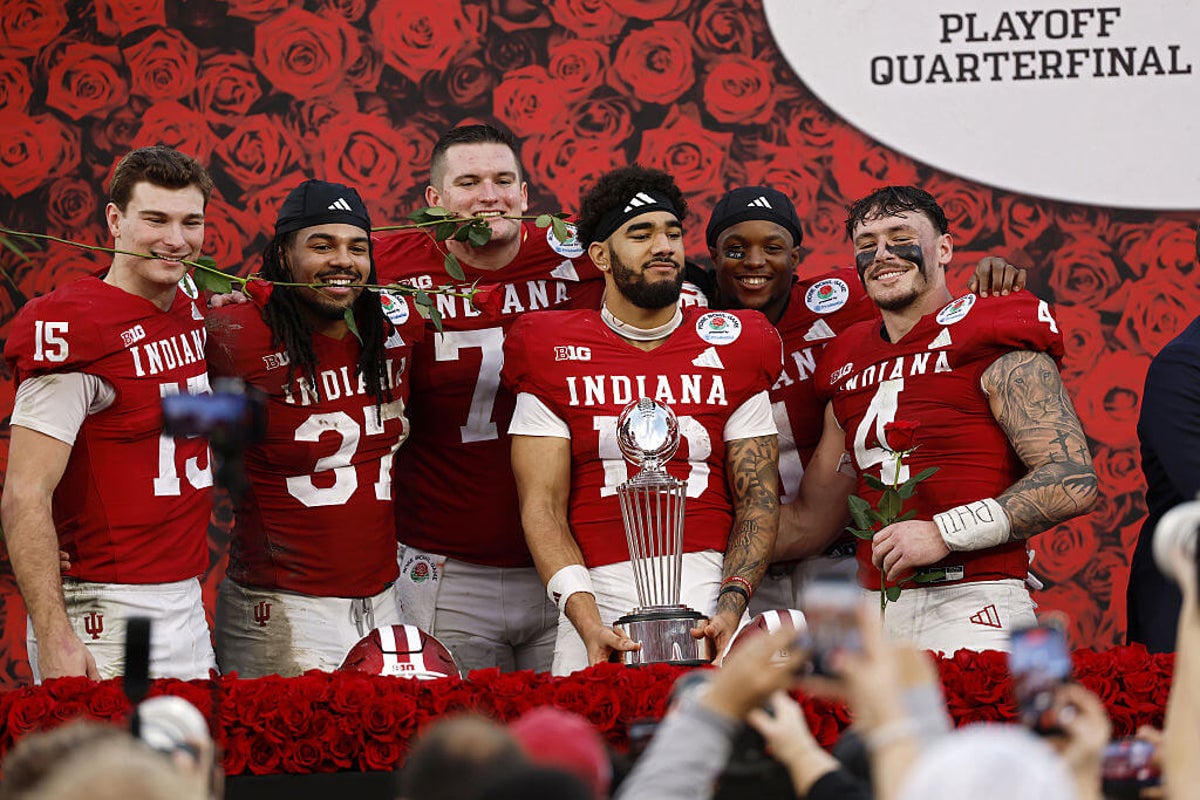
 Until Saturday Newsletter 🏈 | This is The Athletic’s college football newsletter. Sign up here to receive Until Saturday directly in your inbox.
Until Saturday Newsletter 🏈 | This is The Athletic’s college football newsletter. Sign up here to receive Until Saturday directly in your inbox.
In the first two years of the 12-team Playoff era, teams with first-round byes went 1-7. But five of those seven were underdogs or tiny favorites anyway, and the lone winner just humiliated Alabama by 35 in easily the greatest moment in program history (so far). So I think it’s a wash.
Either way, college football has joined the NFL and MLB debates on whether it’s bad or good to get a free pass to the second round. Happy New Year!{{/ifContains}}
Absolute Cinema: What a fresh final four
The best story still on the table in this college football season is pretty obvious, because it’d be one of the best stories in American sports history: the ever-hopeless Indiana Hoosiers (38-3 vs. Alabama in yesterday’s Rose) winning it all for the first time ever, almost literally out of nowhere.
But most of us can agree it’d feel nearly as good, if more of an LMAO kind of good, to see Ole Miss (39-34 vs. Georgia in the Sugar, a game-of-the-year contender) spite Lane Kiffin by winning the Rebels’ first title since their 1962 claim, right? Based on their scores in games against Georgia, maybe they’re better without him anyway.
If neither of those happen, we could have a far worse consolation moment than Oregon (23-0 vs. Texas Tech in the Orange) getting its first ring after several cruel near-misses during its decades-long rise. These relentlessly aggressive Ducks are never boring. Either Indiana or Oregon would be FBS’ first new national champion since 1996 Florida.
Five-time champ Miami (24-14 vs. Ohio State in the Cotton) is the closest thing to a historical ringer here, but anyone who remembers the 1980s or 2000s could honor a sixth by regaling the youths about the Hurricanes of yore. Plus, the championship’s in Miami. Imagine the Canes vs. Fernando Mendoza, whose high school is across town from Hard Rock Stadium.
Look at those four teams. There’s no evil empire left. The Hoosiers and Rebels just knocked out the Tide and Dawgs. Miami handed Ohio State the biggest upset in Playoff history on Friday. Anyone still mad at, I dunno, Clemson can rewatch the Pinstripe Bowl. Brian Kelly’s unemployed, not that he ever won anything big anyway. The vibes are immaculate.
Remember when guys with big microphones told you the NIL era would permanently entrench college football’s uppermost layer, ensuring nobody new ever got to do anything cool? Are those guys ever right about anything?
Now look at us. Those of us without teams still in this fight: We can’t lose. This is gonna rule. Though, yes, America’s primary team is from Bloomington.
- Title odds, per Austin Mock’s projections: Peach Bowl opponents Indiana (35 percent) and Oregon (29 percent) lead, with the Fiesta’s duo splitting the rest. The Hoosiers are football championship favorites. Say it until you can believe it’s real. (BetMGM opening lines: Indiana -4 and Miami -3.)
- Since the Sugar Bowl ended late, you gotta catch up on everything that happened in the final minute. Trinidad Chambliss heroics and Rebels kicker Lucas Carneiro nailing his third bomb of the night were the sensical parts. After that, Georgia’s desperate kick return resulted in a safety. Confetti fell. But the refs put a second back on the clock, the Dawgs recovered an onside kick, Ole Miss again thought it’d won, Georgia ran around for a while and then the Rebels finally won. Entertainment!
- So much about Ohio State’s season now feels telling in hindsight. All those nondescript gimmes against overmatched teams. The annual Ryan Day consternation is here, one month later than usual.
- Despite all the (justified) game-management jokes in the world, Miami’s here because of Mario Cristobal.
- Texas Tech’s big-money season (there’s the money mention again) looked like it was about to go down as a total success, regardless of what happened yesterday. Getting shut out changed that.
- “The Audible,” up late last night: Indiana has no interest in being a mere Cinderella.
Hey, side note: Remember all those takes about JMU’s 17-point loss to Oregon in Round 1? How it allegedly proved the entire G5 should go join the NAIA or something?
Unlike the Big 12 champions yesterday, the Dukes managed to score on Oregon. Got 34 points, in fact. (And no, they weren’t all against backups. I saw Dante Moore still throwing, late in the fourth.) JMU outrushed Alabama’s two-game Playoff effort by 135 yards, too. Is Joel Klatt gonna express condescending sympathy for the Crimson Tide, one of the most helplessly outmuscled teams in Playoff history?
A year prior, various SEC figures slammed Indiana for getting humbled by Notre Dame in an opening-round game, allegedly having stolen a spot from a three-loss SEC team. Anyway, that conference then got swiftly erased from last year’s Playoff as supposed snubs Bama and South Carolina lost their bowls.
In both years of the 12-team era, to issue a bold proclamation based on the first couple results has meant looking kind of silly just a few days later. It’s OK to let things happen.
Quick Snaps
🅾️ For much of this season, college football’s highest-rated team was Ohio State, while the lowest-rated team in Division III was just two hours away: Oberlin, which went an emphatic 0-10. Guess which team had more fun? (Fun fact: The Yeomen were also the last Ohio team to beat the Buckeyes in football, getting it done in 1921.)
🏆 Coaches on two different sides of yesterday’s ledger:
- “This is a playoff, and in my opinion, should’ve been played in Lubbock, Texas.” Dan Lanning’s right, even though it would’ve made things tougher on his Ducks yesterday. (Maybe not 23 points tougher.)
- Elsewhere, Kirby Smart saying the Sugar Bowl felt at times like a road game wasn’t sour grapes. Giving every top seed a home game, even at the expense of those apparently risky byes, will surely be part of somebody’s case for a 16-team Playoff.
📺 The NFL had 84 of 2025’s 100 most-watched TV events, per Sports Business Journal. College football was the second-biggest presence, with half of the other 16. Bet 2026 started hot, too.
Still Alive: Welcome to the all-at-once portal era
Because there isn’t enough going on, today is the first day of 2026’s only football portal period, lasting through Jan. 16. In the previous world, a 30-day December window was followed by 15 days in April. Now there’s only one shot to get it right.
“This is a new deal for all of us. You can’t fix it again in May if you mess it up. We have to be great during these 14 days and be efficient with our time and resources. If you miss on a kid, you can’t fix it. Our kids’ and coaches’ lives will be determined by these next 14 days.”
That’s Tulsa head coach Tre Lamb, explaining part of the thinking behind the Portal House. In a five-bedroom, Xbox-laden house near the Golden Hurricane’s campus, Lamb’s staff will host visiting prospects day and sometimes literally night. The viral-friendly experiment might sound like a gimmick, but it’s kind of the opposite:
“You’re saving money because you’re not taking guys to Ruth’s Chris and Polo Grill every night where it’s $2,000-$3,000 dinners every single night. … You’ve got $180,000 in your recruiting budget. We would rather bring guys to campus and to this house.”
If this works well, expect it to be copied once the portal re-opens … in 2027. More here.
As for the big names to know:
- Probably gonna link to this another time or two, so you might as well just have it open: 2026 transfer QB rankings, to be updated with destinations and more names. As noted, Cincinnati QB Brendan Sorsby could be this cycle’s money man.
- Top five portal players at each non-QB position. Highest upside: Auburn WR Cam Coleman. Best name: NC State RB Hollywood Smothers. Most decorated: Utah edge John Henry Daley, potentially a major get for Kyle Whittingham’s Michigan.
- In those two links, No. 7 QB Rocco Becht and five of those 50 non-QB players are all leaving Iowa State. Would’ve been Big 12 contenders, now following Matt Campbell to Penn State?
More portal next week, and more on the site until then.
January Madness: SEC’s bowl record matters as much as you want
The SEC’s mark in this season’s postseason games against non-SEC teams: 2-6. Average score against ACC, Big 12 and Big Ten teams: 27-20.
Neither of those two wins merits much bragging, either. Ole Miss won a home Playoff game against an 11th-seeded Tulane team that it’d already beaten in the regular season, and No. 13 Texas beat an interim-coached No. 18 Michigan 41-27 in the Citrus.
Otherwise, it was a lot of stuff like No. 23 Iowa winning 34-27 in Tampa, putting to rest talk of No. 14 Vanderbilt having been a Playoff snub.
The SEC has failed the likes of whoever sponsors the Music City Bowl these days (Illinois 30, Tennessee 28). How much does that matter? Two simultaneous truths:
- Bowl results have always said dubious things about how good any particular team might be. In the modern era, that’s due to opt-outs and coaching changes, but it’s been a thing for decades. The polls didn’t unanimously start counting bowls toward national titles until the 1970s. Even a decade ago, when rosters were quaint in their stability, teams in bowls simply did not behave like themselves. Ask anyone who’s ever worked with computer power ratings. So the SEC’s ugly winter (and mere 13-11 record across the previous two postseasons) might not accurately reflect team quality.
- But if the SEC’s gonna talk our ears off about its depth, it has to dominate, regardless of context. It had a mostly good non-con during this regular season, which mostly backed up this summer’s schedule-strength PR. Thing about PR, though: You don’t get to choose which games the public ignores. Football still happened this past week. We saw it.
Tonight, we’ll see if 5-7 Mississippi State can impress in the Mayo Bowl against 8-4 Wake Forest. Very funny to consider how many serious narratives hinge on which coach takes a mayo dump to the skull.
After that, if the Rebels win the national championship, these things will become mere fun facts. But if they don’t reach the title game, these things will be especially fun facts for those who enjoy SEC schadenfreude.
- Other bowl note: Citrus Bowl star Arch Manning’s probably about to be a two-time offseason Heisman favorite. First to pull that off without winning it in the meantime since … a former Citrus Bowl star named Peyton? (Trevor Lawrence was really close to doing it.)
That’s it for today. Just nine games left, including today’s four bowls on the watchability calendar below. Don’t forget Sunday’s Division III championship in Canton, Ohio’s Stagg Bowl (three-trophy dynasty North Central vs. high-scoring upstart Wisconsin-River Falls) and Monday’s FCS title game in Nashville (10.5-point BetMGM favorite Montana State vs. road warrior Illinois State). See you Tuesday.

Love Until Saturday? Check out The Athletic’s other newsletters, too.
NIL
Kentucky QB Cutter Boley plans to enter the transfer portal
The Will Stein era for Kentucky football will apparently begin with a new starting quarterback.
Redshirt freshman Cutter Boley told ESPN on Friday he will enter the transfer portal, likely ending his stint as one of the most-hyped quarterback recruits to play for the Wildcats after just two seasons.
A former LaRue County and Lexington Christian Academy star, Boley committed to UK as a five-star prospect when now Jacksonville Jaguars coach Liam Coen was offensive coordinator. Boley was later rated as a four-star prospect by the major recruiting services after reclassifying to the high school class of 2024 to graduate a year earlier than originally planned.
Boley then appeared in four games while redshirting as a UK freshman, building hype with impressive performances in the second halves of games versus Texas and Murray State. He opened the 2025 season as the backup to transfer Zach Calzada but took over the starting job just three weeks into the season.
As a redshirt freshman, Boley completed 65.8% of his passes for 2,160 yards with 15 touchdowns and 12 interceptions. He was named the QB on the SEC’s All-Freshman team after the season.
Former UK coach Mark Stoops frequently spoke of the ability to build around Boley and not need to sign another transfer quarterback as reason to hope for a quick turnaround in 2026. Boley indicated after the season-ending loss to Louisville that he wanted to return to UK, but even if Stoops had not been fired it was too early to assume that would be the case.
Replacing Stoops with Stein, the coordinator for one of the most exciting offenses in college football at Oregon, seemingly gave Boley more reason to stay in Lexington, but Stein was noncommittal about building around Boley in his first public interviews.
“Not just Cutter, but everybody on the team I’m excited to coach,” Stein said when asked about Boley at his introductory news conference, which Boley attended along with several other teammates. “This is a great opportunity for me. I know we have a lot of great players here. Ready to get working with them.”
After offensive coordinator Bush Hamdan changed the offense midseason to focus on quick, short passes that simplified Boley’s decision-making process, Boley looked like the quarterback of the future that the previous coaching staff had hyped him to be since his commitment in high school. He completed at least 74% of his passes in four of five games from Oct. 18 to Nov. 15 with nine touchdowns and four interceptions.
The progress stalled for Boley and the rest of the offense in the final two games, though.
In a 45-17 loss at Vanderbilt, Boley completed just 59.1% of his passes with 203 of his 280 passing yards coming in the fourth quarter after UK had already fallen behind by 42 points. He completed just 13 of 26 passes for 100 yards and two interceptions in the season-ending 41-0 loss at Louisville.
“I feel like my overall command of the offense, just kind of being a captain and just managing the offense as a whole (improved in 2025),” Boley said after the Louisville game. “I feel like there’s a variety of areas I still need to get better in. There’s not one specific one I need to get better, but there’s a ton of areas I just need to improve. I just need to improve overall.”
Turnovers were a particular issue for Boley, who has thrown 17 touchdowns and 16 interceptions in his career. He also lost two fumbles this season. Three of his 2025 turnovers were returned for touchdowns.
Stein pointed to accuracy as a key trait he looks for in quarterbacks. Given his track record in helping turn three straight transfer quarterbacks (Bo Nix, Dillon Gabriel and Dante Moore) into stars at Oregon, he seemed likely to at least bring in competition for Boley for next season.
On3 reported Thursday Arizona State is the favorite to sign Boley. North Carolina, Virginia Tech and Nebraska were other schools in the mix, according to the report.
UK’s now has just one quarterback with remaining eligibility on the roster: freshman Brennan Ward. Ward made one brief cameo in the blowout win over FCS Tennessee tech. Stone Saunders, who did not appear in a game this season, plans to enter the transfer portal. Calzada and walk-on backup Beau Allen graduated.
Earlier Thursday, before news of Boley’s transfer plans broke, ESPN reported UK was among the suitors for TCU transfer quarterback Josh Hoover. Indiana has been reported to be the favorite for Hoover’s commitment but is still waiting for final word on whether Heisman Trophy winner Fernando Mendoza will declare for the NFL draft.
Even if Stein did not see Boley as the best option to build his first Kentucky offense around, the need to find a transfer quarterback will affect the rest of UK’s transfer strategy since a large portion of the revenue sharing and NIL budget will now need to be devoted to a starting quarterback.
UK has several holes on defense to fill after transfer announcements from cornerback DJ Waller, defensive lineman Jerod Smith and edge rusher Steven Soles. The Wildcats also need to replace the entire starting offensive line and add at least one starting-caliber receiver.
This story was originally published January 1, 2026 at 4:18 PM.
NIL
Transfer portal positions of need for Kentucky football
When Will Stein was introduced as Kentucky football’s coach, he did not shy away from expectations for the type of quick turnaround seen at schools like Indiana after coaching changes.
“I didn’t come here to be average, to be mediocre,” Stein said. “I came here to win and win championships.
“I’ve won at every single level that I’ve been at: high school, college. Now the goal is to win here. Not to win five years down the road, 10 years down the road. Do it now.”
Step one in building a competitive 2026 roster is determining which Wildcats with remaining eligibility the new staff thinks are worth prioritizing with revenue sharing and NIL funds to keep. Stein made it most of a month without news of a major piece from the 2025 roster transferring, but that trend ended this week with announcements that quarterback Cutter Boley, cornerback DJ Waller and defensive lineman Jerod Smith were entering the portal. Boley’s departure in particular changes the staff’s portal strategy since a large portion of the roster budget must now be devoted to a new starting quarterback.
Even if Stein and his staff keep all the returning Wildcats they want to build around, they need more help. Starter-caliber transfers are clearly needed at a handful of positions even without further departures. Almost every position on the roster could use at least one addition for depth, but needs will need to be prioritized to fit within the program’s revenue-sharing and NIL budget. For instance, shortly after the portal opened Friday, UK was reported to be hosting Texas running back C.J. Baxter, a former five-star recruit, for his first visit, even though running back does not appear to be one of the bigger holes on the roster.
There will be only one transfer portal window this offseason, meaning Stein and company have to make any additions to the roster from the group of players that enters the portal between Jan. 2-16. The 16th is also the deadline for students to enroll in classes for the spring semester at UK, meaning any transfers who are planning to be on campus for spring practice must be signed by then.
The list of transfer-portal priorities could change with a key loss in the coming days, but as the portal opens, here’s a look at the positions where the new staff definitely needs to find help.
Quarterback
Stein was measured in his public comments about Boley before the transfer announcement, so it is possible the staff was always looking to add a quarterback to at least compete for the starting job. Regardless, the new coaches clearly decided not to best whatever financial package Boley has been presented by other interested programs.
Now, Stein and offensive coordinator Joe Sloan must identify and land a new starter, who will surely take a large chunk of the roster budget. Stein thrived with transfer quarterbacks at Oregon, helping turn Bo Nix, Dillon Gabriel and Dante Moore into stars, so he has plenty of evidence to show the current crop of transfers why they should pick Kentucky. The quarterback market is expensive, though, and Kentucky probably needs at least two additions.
Redshirt freshman Brennen Ward is the only quarterback remaining on the roster. Four-star signee Matt Ponatoski could join him in the summer if he does not elect to skip college altogether and sign a baseball contract as an MLB draft pick in July. Even if Ponatoski follows through on the plan to play football and baseball at UK, the Wildcats need a fourth scholarship quarterback for 2026. Does Stein try to land two quarterbacks to compete for the job or prioritize one starter and a depth option?
Possible targets: UK is a “major player” for former Arizona State quarterback Sam Leavitt, according to On3. Leavitt was considered one of the top quarterbacks in the country entering 2025 but he was limited to just seven games due to a foot injury. ESPN reported Thursday, before Boley’s announcement, that Kentucky was one of the schools pursuing former TCU quarterback Josh Hoover.
Offensive tackle
With offensive guard Jalen Farmer’s decision to enter the NFL draft, Kentucky must replace its entire starting offensive line from 2025. Filling those holes is made more difficult because the former staff rarely rotated on the line in 2025, providing little game evidence of how many backups are ready to step into larger roles. The best-case scenario for the line is left tackle Malachi Wood, center Evan Wibberley and guard Aba Selm are ready to at least compete for starting jobs. Junior college transfer Jordan Knox could add another possible starter to the mix of linemen already in the fold.
There is no clear candidate on the roster to start at right tackle, though. Darrin Strey was listed as the top backup there in 2025 but played only a smattering of snaps in blowouts as a freshman. It seems unlikely he will be ready to start in the SEC as a redshirt freshman. Kentucky must add at least one transfer tackle that can be counted on as a surefire starter. Whether multiple tackle additions are needed will depend on the staff’s evaluation of Wood and the other young tackles on the roster.
Possible targets: One name to watch is former LSU tackle Carius Curne, who started five games as a freshman in 2025. UK has been listed as a contender for Curne thanks to the presence of former LSU offensive coordinator Joe Sloan on Kentucky’s staff, but there will be stiff competition for one of the most talented tackles in the portal. UK has also been linked to LSU tackles Tyree Adams and Ory Williams.
Cornerback
There was a scenario where Kentucky might have been able to build around the players already on campus at this position with four cornerbacks who started games last season having eligibility left, but that possibility was ended by the announcements that DJ Waller and Nasir Addison were entering the portal. Waller, while rarely healthy in two years at UK, was the most talented cornerback on the roster, and Addison impressed as a fill-in starter in the wins over Auburn and Florida last season.
Junior Terhyon Nichols, who has started seven games in two seasons at UK, is now the top returning cornerback. Sophomore Grant Grayton, who played more than expected as a freshman due to the injury crisis at the position, is also set to return. Nichols battled his own injury issues last season though, and Grayton did not look ready for a starting job.
Kentucky did sign junior college transfer Braxton Urquhart in December to at least boost depth at the position and has some intriguing younger cornerbacks on the roster who did not play much in 2025. Still, at least one transfer capable of competing for a starting job now looks like an essential addition.
Possible targets: Western Carolina cornerback Hasaan Sykes, who totaled three interceptions in 2025, announced a UK scholarship offer Friday and plans to visit Lexington on Jan. 3. Villanova defensive back Anthony Hawkins, who played mostly safety at his former school, is scheduled to visit UK, Iowa and Wisconsin, according to On3. Iowa State cornerback Quentin Taylor plans to visit Mississippi State, Cincinnati and Kentucky, according to On3.
Offensive guard
The former staff viewed Selm as a guard capable of stepping into a featured role next season, but an injury that made him a regular inclusion on the weekly availability report and caused him to miss the final four games prevented him from gaining valuable game experience in 2025. Knox, a former four-star recruit who played guard and tackle at Northwestern as a freshman before transferring to a junior college, was recruited by the former staff as a possible 2025 contributor too. Freshman Jay Clark is the other top returning guard.
Counting on two of those three players to turn into SEC-caliber starters is a dangerous proposition. If the new staff is impressed by the practice film of Selm and Clark available to them, perhaps it does not need to pay top dollar in the guard transfer market, but at least one addition capable of competing for a starting job is needed.
Possible targets: Centers Coleton Price (Baylor) and Delvin Morris (Akron) are reportedly visiting Kentucky this weekend. It is possible the staff envisions moving one or both to guard, or moving current center Evan Wibberley to guard if he stays at UK.
Inside linebacker
UK must replace both starting inside linebackers after Alex Afari and Daveren Rayner exhausted their eligibility in 2025. But an injury that caused Afari to miss time down the stretch gave Grant Godfrey an expanded role and a chance to prove worthy of a starting job heading into his junior season. Even if the new staff thinks Godfrey is ready to start, UK needs another inside linebacker starter.
Antwan Smith played regularly as a backup linebacker in 2025 but did not look ready to take over a featured role. Maybe he makes a big jump over the offseason, but with no proven depth behind him, finding a veteran linebacker is a must. The other four scholarship inside linebackers with eligibility left played only a handful of snaps combined last season.
Possible targets: Arkansas linebacker Tavion Wallace, a former four-star recruit and the younger brother of former UK linebacker Trevin Wallace, told On3 he would visit UK this weekend after entering the portal.
Nose guard
Kentucky’s top three nose guards from 2025 are gone, with starter David Gusta and backup Josaih Hayes having played their last college games and backup Austin Ramsey announcing plans to transfer. The hope is retaining defensive line coach Anwar Stewart will help Kentucky keep key linemen like Tavion Gadson and Mi’Quise Humphrey-Grace in the fold, but even in that scenario, UK needs a new nose guard for the base 3-4 formation.
Perhaps new defensive coordinator Jay Bateman envisions moving one or more lineman from other positions to the nose, but for now Kalen Edwards looks like the best option there. The 6-foot-4, 328-pound lineman should be a rotation piece at least after redshirting as a freshman, but with no spring transfer window anymore, Kentucky cannot afford to wait to see if a full winter in the strength and conditioning program transforms Edwards into a starter.
Possible targets: Defensive lineman Ahmad Breaux (LSU), Ian Geffrard (Arkansas), Khalil Poteat (Temple), Michai Boireau (Florida) and Kourtney Kelly (West Georgia) were all reported to be planning visits to Kentucky on the first day the portal was open. Former Frederick Douglass star Jamarrion Harkless, who started all 12 games for Purdue in 2025, is among the early options in the portal at the position.
Wide receiver
Five of the nine wide receivers listed on UK’s two-deep depth chart last season, including leading receiver Kendrick Law, are gone. If DJ and Cam Miller and Hardley Gilmore all return, that’s a decent nucleus to build around at the position, but UK needs at least one starter. The good news is wide receiver is the strength of the 2026 high school signing class, led by four-star prospect Kenny Darby, the first recruit to pledge to Stein at UK.
Stein’s high-octane offense should be attractive to any number of receivers in the portal, but Kentucky will have to consider how much of its revenue-sharing and NIL budget to devote to the position if it’s able to retain the underclassmen.
Possible targets: UK has already been linked to former Auburn wide receiver Malcolm Simmons. UTSA wide receiver Devin McCuin, who caught 65 passes for 726 yards and eight touchdowns while playing for new UK receivers coach Joe Price last season, has also announced plans to enter the portal. On3 has also listed Kentucky among the suitors for Syracue receiver Darrell Gill and Missouri receiver Marquis Johnson.
Punter
Kicker Jacob Kauwe has three years of eligibility left if he stays at UK, but the Wildcats have no punters on the roster following the graduation of Aidan Laros and Wilson Berry. With the SEC allowing teams to fund up to 110 scholarships next season, Kentucky should at least be able to offer a full scholarship to a punter from a smaller school if the staff decides to pursue a transfer.
Former special teams coordinator Jay Boulware moved UK away from its pipeline of Australian punters, but it is possible the new staff looks to Australia again for a late signee in February. Oregon, where Stein and UK’s reported new special teams coordinator Parker Fleming currently work, uses an Australian punter. Ohio State also used an Australian punter while Fleming was special teams coordinator there. Max Duffy, who won the Ray Guy Award as the nation’s top punter while playing for UK, is now a coach with ProKick Australia, the organization that sends most Australian punters to college teams.
This story was originally published January 2, 2026 at 5:00 AM.
NIL
SEC Transfer Portal Update: Day One

By Chris Marler
The 2026 NCAA transfer portal opened Friday morning for college football. Early movement has centered on player entries, with no major commitments yet. Here’s a day one recap.
By the numbers
Over 2,000 players entered the transfer portal within the first 12 hours of it being opened. To put that in perspective, 1,600 entered on day one two years ago. Last year, the number of entrants on day one was nearly 2,400, and at the pace we are currently sitting at this year’s numbers should surpass those.
Going rate keeps going up
The market value for certain players and positions has been fascinating to watch over the first couple of years in the portal. The first Power Four QB deal that was reported when NIL was legalized in 2021 was Miami QB D’Eriq King who got $20,000 from College Hunk Movers. Those numbers have changed dramatically.
On3’s Pete Nakos gave a list of the market value for several of the positions in the portal this year. Here’s a look at where some currently sit.
- Quarterback – $750,000 to $4 million
- Defensive Line – $500,000 to $1.5 million
- Offensive Line – $500,000 to $1.2 million
- Wide Receiver – $400,000 to $1 million
- Running back – $350,000 to $1 million
- Defensive Back – $300,000 to $850,000
Exodus by SEC teams
These numbers will fluctuate rapidly, but as of Friday, Jan. 2 at 3:30 p.m. CT here are the total players that have entered the portal for each SEC team according to 247Sports.
The first day of the window still has nearly seven hours left at the time of writing this, but as of now 260 players from the SEC have entered their name.
- Auburn – 32
- Florida – 28
- Mississippi State – 24
- Missouri – 22
- Oklahoma – 20
- Arkansas – 20
- Tennessee – 19
- South Carolina – 18
- LSU – 18
- Texas – 16
- Kentucky – 13
- Texas A&M – 9
- Vanderbilt – 9
- Alabama – 6
- Georgia – 5
- Ole Miss – 1
Make sure you’re staying up to date with all things in the portal here at Louisiana Sports with our daily SEC portal update every day at 4 p.m. CT.
NIL
3,500-yard transfer QB surprisingly linked to new college football programs
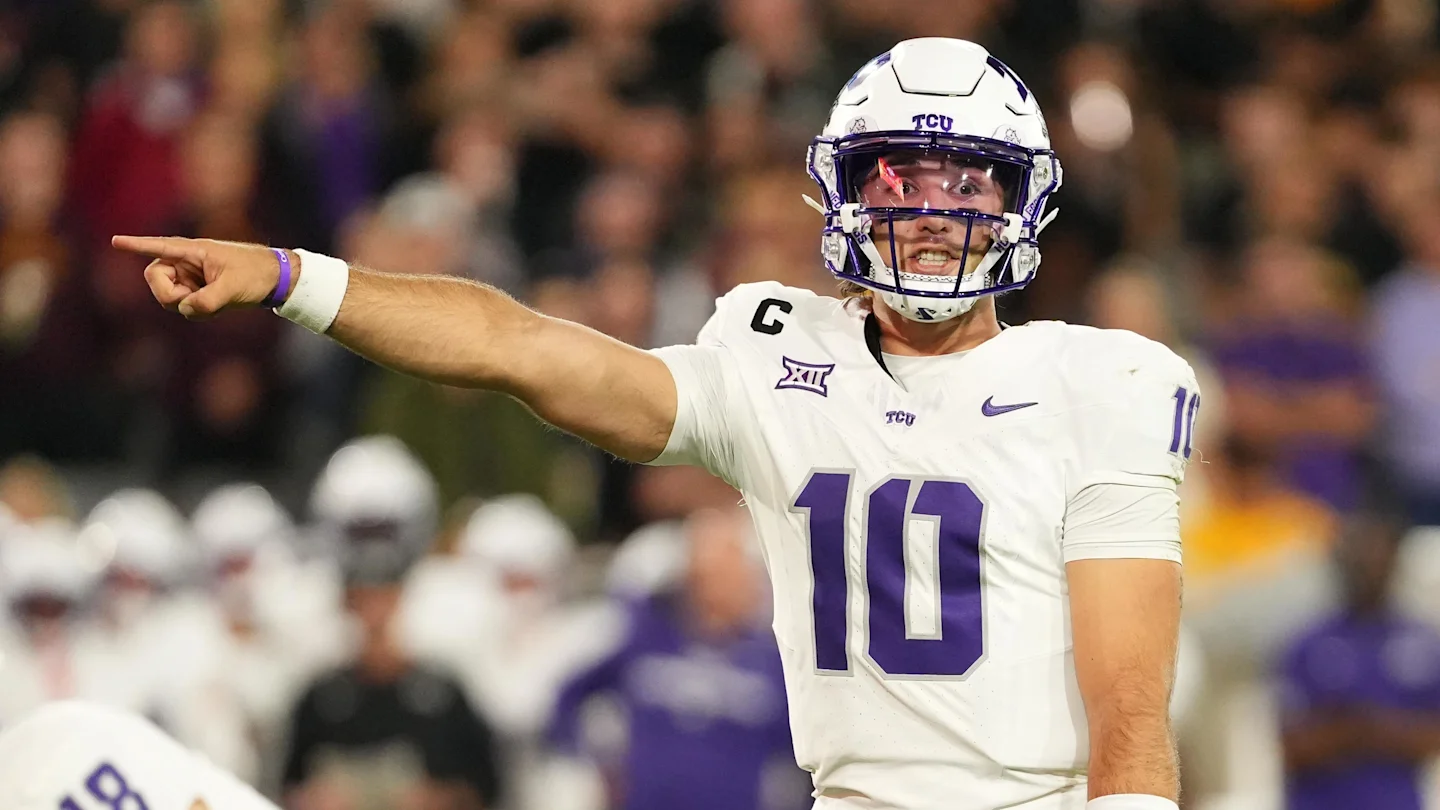
One of the more sought-after quarterbacks in the college football transfer portal may be trending towards one school, but two more candidates appear to have emerged in the arms race to secure a passer who had more than 3,400 passing yards this season.
TCU quarterback Josh Hoover announced his intention to enter the NCAA transfer portal last month, and while the top team in this year’s College Football Playoff quickly emerged as a likely landing spot, a pair of in-state rivals are also in the mix.
Indiana remains the favorite to earn Hoover’s commitment out of the portal, but now Kentucky and Louisville are both in the conversation as the quarterback scouts a new school for the 2026 football season, according to a report from On3 Sports.
Hoosiers still on top
In the midst of the single-greatest season in its history, Indiana is still the consensus favorite to earn Josh Hoover’s commitment out of the transfer portal.
ESPN college football insider Pete Thamel revealed that Curt Cignetti and the Hoosiers are poised to target Hoover as the heir apparent to Fernando Mendoza when their current starting quarterback ultimately leaves the program for the NFL Draft.
“The final domino that will unfold is Fernando Mendoza,” Thamel said when appearing on ESPN.
“The widespread expectation in the NFL is that Mendoza is going to go pro after the season. He obviously just won the Heisman Trophy.”
He added: “To replace him, I’ve been told Indiana is expected to target Josh Hoover, the former TCU quarterback. Hoover was initially committed to Indiana out of high school.”
Mendoza is currently under center for No. 1 overall seed Indiana and coming off a 35-point win against Alabama in the Rose Bowl quarterfinal round this week.
But when he decides to finally exit the program, the Hoosiers will be in the market for a quarterback, and has proved willing to use the portal to upgrade the position.
Analysts are very high on Hoover being that option, as the quarterback is currently projected to land at Indiana with 100 percent likelihood, according to the 247Sports Crystal Ball.
In-state rivals involved
Louisville and Kentucky are not only rivals on the field, but now could be in the race to secure Hoover’s commitment as one of the more sought-after transfers.
Both are in the market for a quarterback next season.
“Also in the market for Hoover are Louisville and Kentucky,” Thamel added of the Cardinals and Wildcats. “So, those are the big moves that are going to dictate the chaos in the portal.”
Miller Moss is preparing to leave the Louisville program after throwing for almost 2,700 yards while scoring 16 touchdowns and throwing seven interceptions.
Hoover has been connected to the forthcoming opening with the Cardinals, as insiders contend head coach Jeff Brohm is targeting him as Moss’ replacement.
Kentucky has gone through seven quarterbacks in the last five seasons and after the departure of Cutter Boley, will start its eighth signal caller in six years.
New head coach Will Stein is charged with resurrecting a Wildcats offense that placed 96th nationally in passing offense and 101st in FBS in total scoring output.
A player of Hoover’s experience and caliber could be a perfect foundation for a program languishing near the bottom of the SEC to make an Indiana-like jump in its respective conference going forward.
What he’s done on the field
Hoover is a native of Texas who enrolled at TCU coming out of high school after emerging as a three-star recruit in the 2022 football recruiting cycle, ranking as the No. 41 overall player at his position, according to a consensus of national recruiting services.
In 26 career games over the last three seasons, Hoover has completed more than 65 percent of his pass attempts for 9,269 yards with 71 touchdowns and 33 interceptions, rushing for an additional eight touchdowns.
More college football from SI: Top 25 Rankings | Schedule | Teams
Follow College Football HQ: Bookmark | Rankings | Picks
NIL
All-American RB strongly linked to three college football programs in transfer portal

The NCAA transfer portal has officially opened for all college football players hoping to play for new schools next season. The players have a window to enter the portal that ends on Jan. 16.
Thousands of players will be moving around in the 2026 NCAA transfer portal cycle. In some cases, it is an opportunity for prospects to showcase their skills on larger stages by transferring into Power Four schools.
Former North Texas running back Caleb Hawkins is among those entering the transfer portal to increase his exposure on a national level. He will have three seasons of eligibility at his second school.
The 6-foot-2, 200-pounder arrived as a freshman at North Texas in 2025. In his lone season with the Mean Green, he ran for 1,434 yards and an FBS-high 25 touchdown runs to go with 32 receptions for 370 yards and four touchdown catches in the air.
He rushed for over 100 yards in six games, including a season-high 198 yards in the Isleta New Mexico Bowl against San Diego State.
Hawkins received a handful of accolades for his illustrious freshman season. On a conference level, he received AAC Rookie of the Year and All-AAC First Team recognition. Nationally, he was named to the Walter Camp All-America Second Team.

Hawkins’ long list of accomplishments in one season of college football has drawn the interest of multiple Power Five programs looking to land him from the transfer portal. Pete Nakos of On3 reported on three programs pursuing Hawkins.
Oklahoma State
The connections between the staff at Oklahoma State and Hawkins would make him an instant fit for the Cowboys in 2026. Former North Texas head coach Eric Morris took the head coaching vacancy left by Mike Gundy at Oklahoma State on Nov. 25, 2025.
Morris has brought former North Texas offensive coordinator Sean Brophy with him to fill the same role in Stillwater. While there remains a possibility Hawkins ends up at another school, the coaching change will likely draw a bevy of former North Texas players to Oklahoma State.
Texas

Despite a more successful offensive output to end the season, Texas is going to have to address its running back depth in the transfer portal. Lead rusher Quintrevion Wisner and fellow running backs CJ Baxter and Jerrick Gibson are all heading for the transfer portal.
Whether Hawkins wants to be the workhorse of a group or is content to serve as a rotational piece could impact a decision to go to Texas. Christian Clark, the Longhorns’ second most productive running back, is returning to Austin in 2026.
Oklahoma

The production at running back for Oklahoma in 2025 did not play out according to plan. The expectation was for Jaydn Ott and Jovantae Barnes to be heavily featured for the Sooners. What actually happened was a mixture of Tory Blaylock and Xavier Robinson, with quarterback John Mateer leading the team in carries.
Blaylock finished with the most rushing yards on the team at 480 to go along with four touchdowns. Group of Five to SEC is a sizable jump, but Hawkins could slide in and give the Sooners the steady production they have been craving.
-
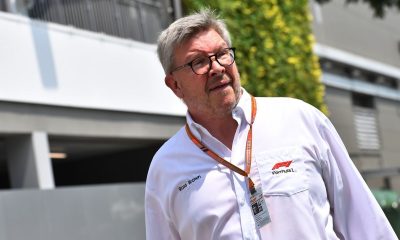
 Motorsports2 weeks ago
Motorsports2 weeks agoRoss Brawn to receive Autosport Gold Medal Award at 2026 Autosport Awards, Honouring a Lifetime Shaping Modern F1
-

 Rec Sports3 weeks ago
Rec Sports3 weeks agoStempien to seek opening for Branch County Circuit Court Judge | WTVB | 1590 AM · 95.5 FM
-
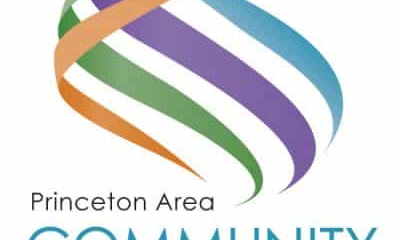
 Rec Sports2 weeks ago
Rec Sports2 weeks agoPrinceton Area Community Foundation awards more than $1.3 million to 40 local nonprofits ⋆ Princeton, NJ local news %
-
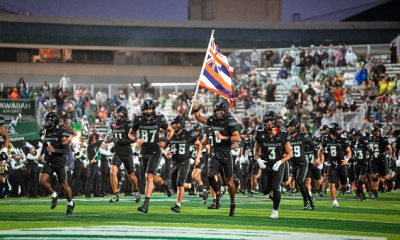
 NIL2 weeks ago
NIL2 weeks agoDowntown Athletic Club of Hawaiʻi gives $300K to Boost the ’Bows NIL fund
-
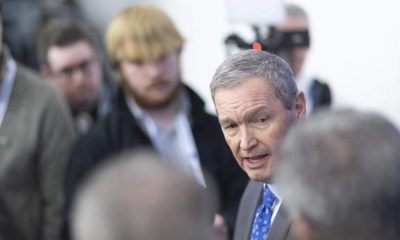
 NIL2 weeks ago
NIL2 weeks agoKentucky AD explains NIL, JMI partnership and cap rules
-

 Motorsports3 weeks ago
Motorsports3 weeks agoPRI Show revs through Indy, sets tone for 2026 racing season
-

 Rec Sports3 weeks ago
Rec Sports3 weeks agoTeesside youth discovers more than a sport
-
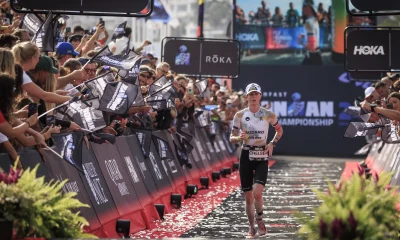
 Sports2 weeks ago
Sports2 weeks agoYoung People Are Driving a Surge in Triathlon Sign-Ups
-
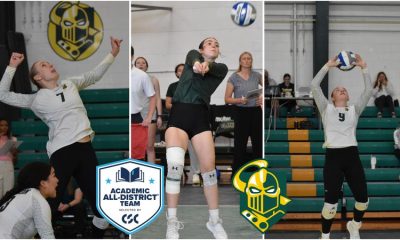
 Sports2 weeks ago
Sports2 weeks agoThree Clarkson Volleyball Players Named to CSC Academic All-District List
-

 Sports3 weeks ago
Sports3 weeks agoCentral’s Meyer earns weekly USTFCCCA national honor
































